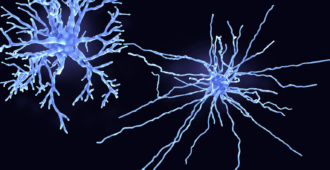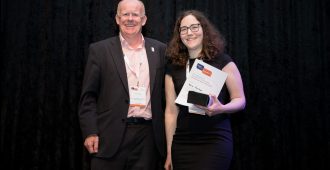
By using spinal cord donations from people with MND, an American group of researchers have created a new, human ‘in a dish’ model of MND. Their results were published in the journal Nature Biotechnology.
Human neuronal progenitor cells, which have the potential to turn into brain cells but not other types of cell, were extracted from post-mortem spinal cords and programmed to turn into living neurone support cells called astrocytes. The research group, led by Dr Brian Kaspar from Ohio USA, is hopeful that these human astrocytes grown in the laboratory can be used to learn more about the causes of MND.
Astrocytes and MND
Astrocytes, so called because of their star-like appearance, have been known to be involved with MND for many years now. Normally, astrocytes support and nourish nerve cells but in MND, they can become toxic to motor neurones, causing them to degenerate. However, before now, there hasn’t been a way to prove that this really does happen in people as it’s impossible to extract these cells while the person is still alive.
Using post mortem samples to find the answers
This research group used post-mortem spinal cord donations from people with MND to create a new, human astrocyte model, grown in laboratory dishes.
They were then able to demonstrate in the lab that these human astrocytes are toxic to healthy human motor neurones, causing them to degenerate. This verifies that astrocytes can cause MND in people, and not just in animal models.
They then went on to show that the healthy motor neurones could be protected if they stopped a protein called SOD1, which can be faulty in MND, from being created. This was found in astrocytes created from a person with a SOD1 form of inherited MND and remarkably, also from astrocytes created from people with the randomly occurring, sporadic form.
Reaching for the stars
By using post-mortem spinal cord donations from people with MND, and thinking ‘outside the neurone’ this research group were able to successfully create a new human ‘in a dish’ model of disease. There are still many unanswered questions left to explore with this new model, such as how the astrocytes cause the motor neurones to degenerate. By understanding more about this process, new treatments could be investigated to stop astrocytes from being toxic and slow down, or stop MND.
Find out more about tissue donation for general research purposes.
Reference:
Published in Nature Biotechnology: doi:10.1038/nbt.1957





